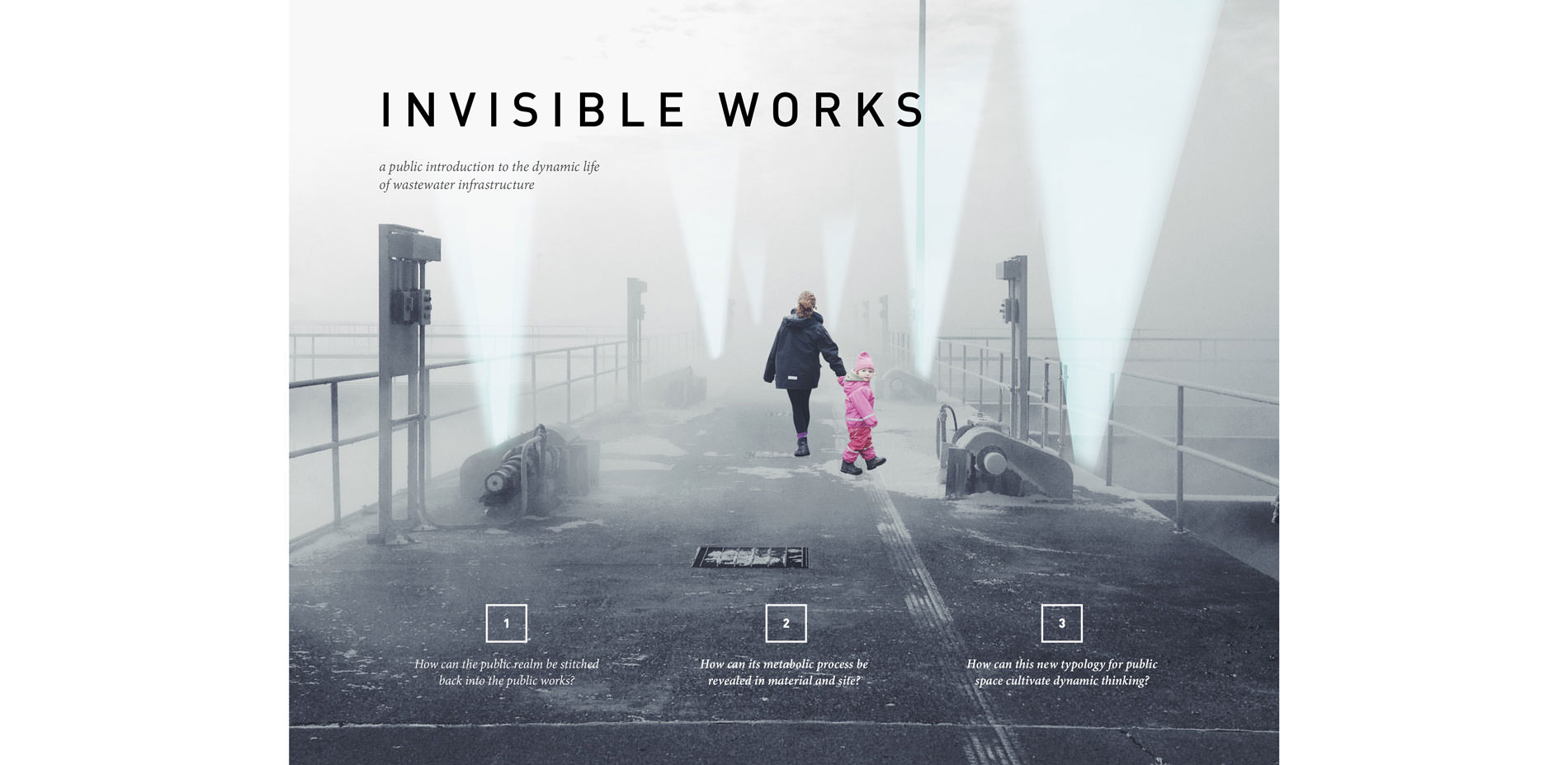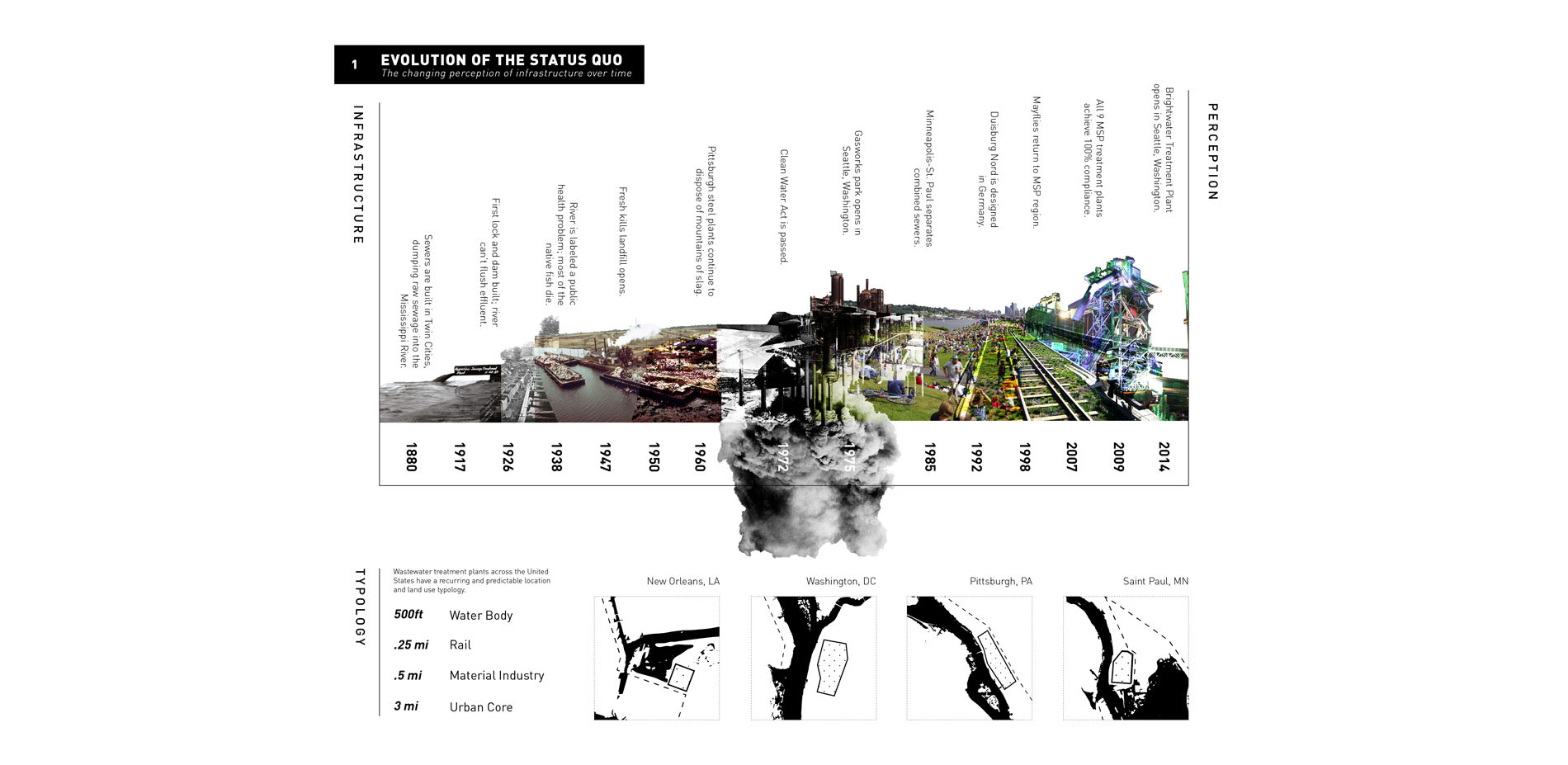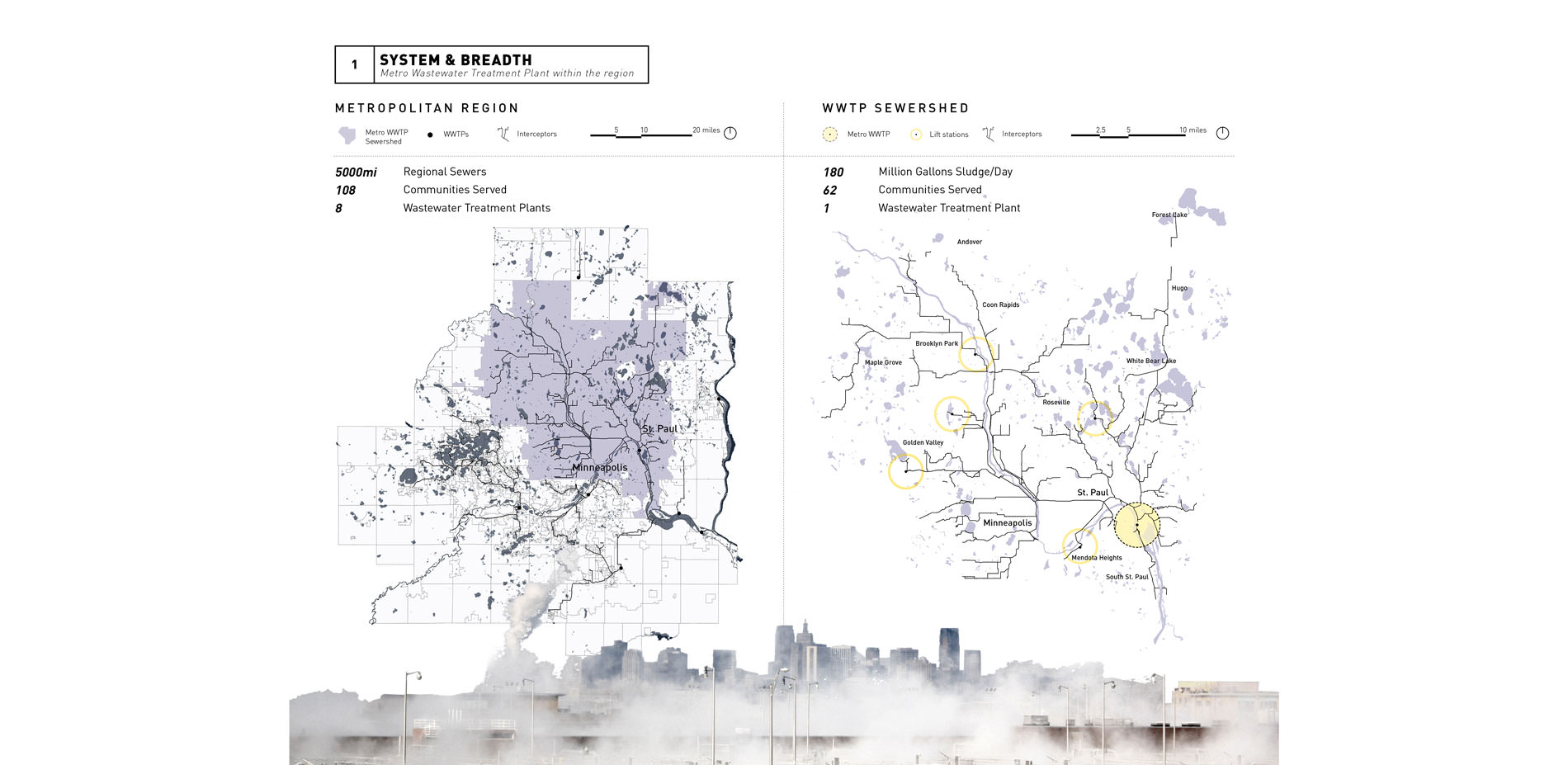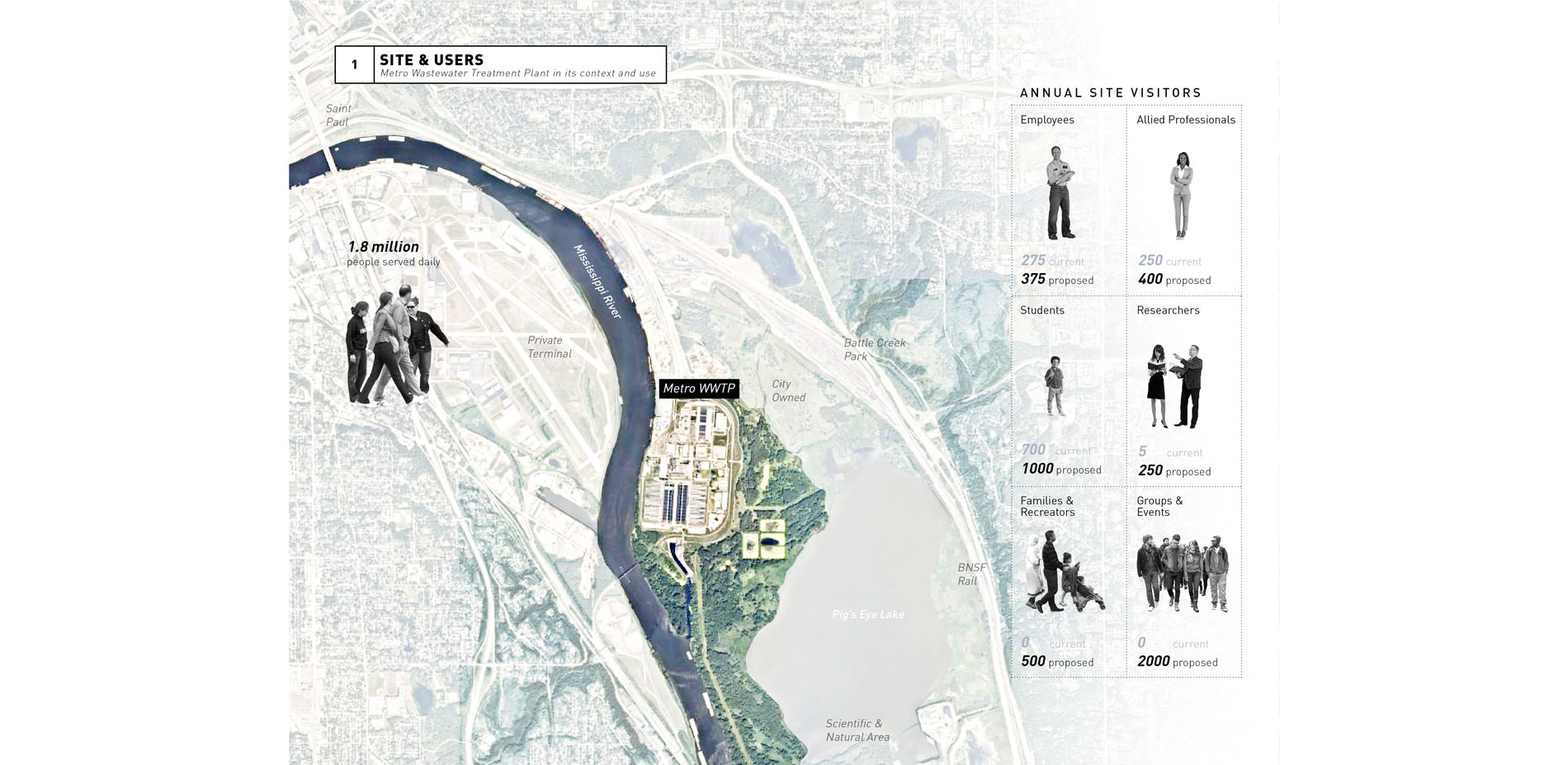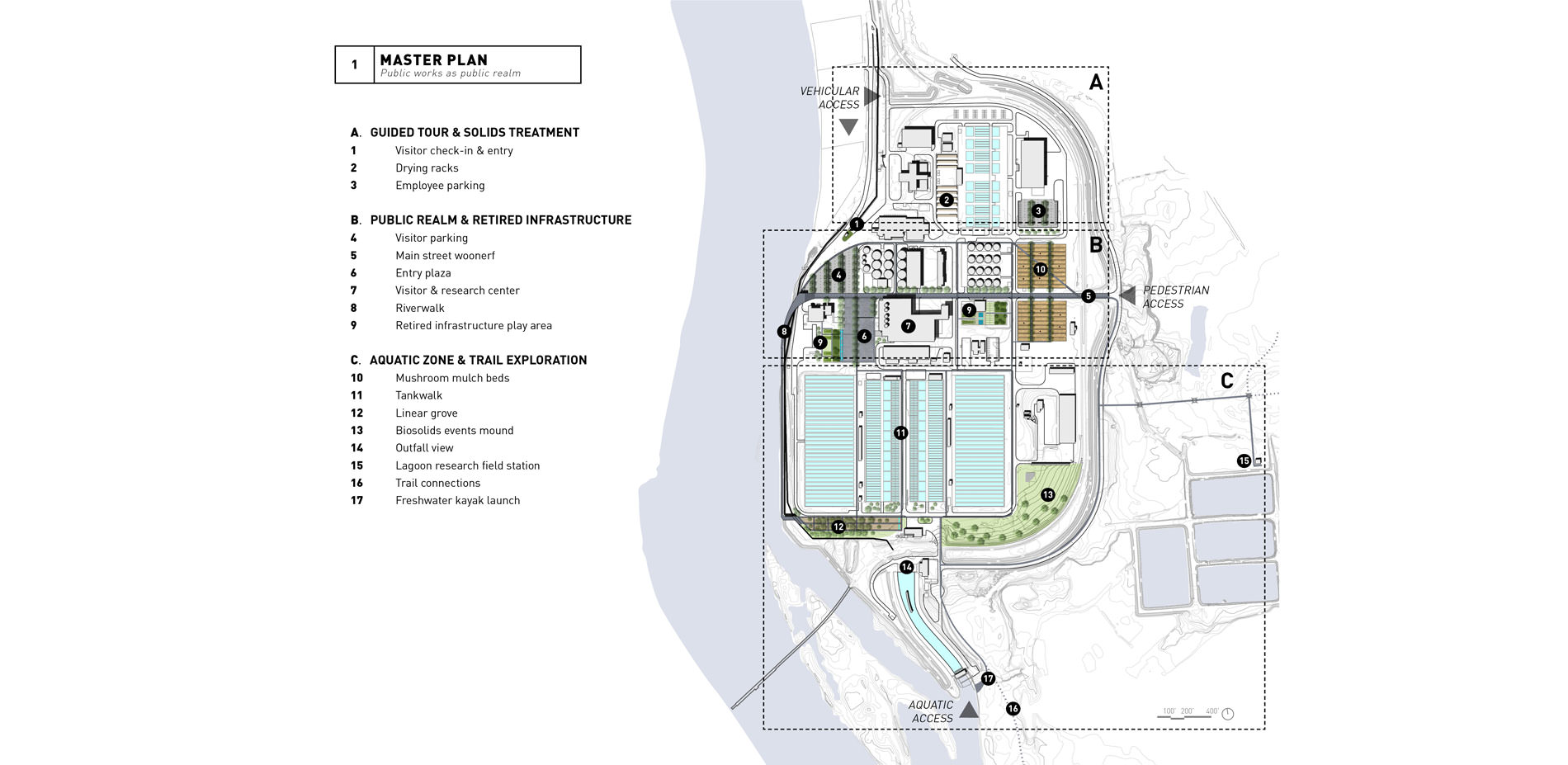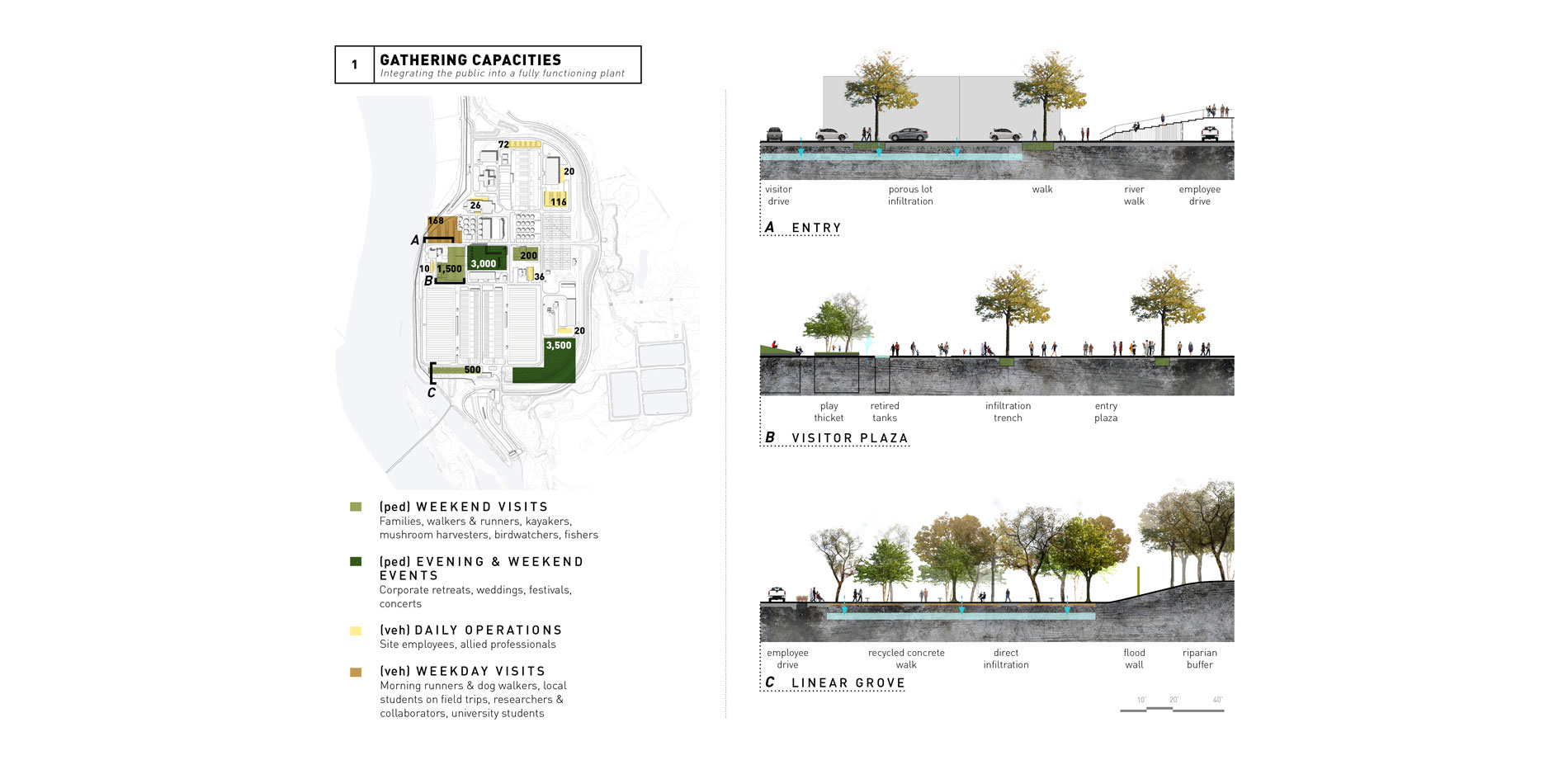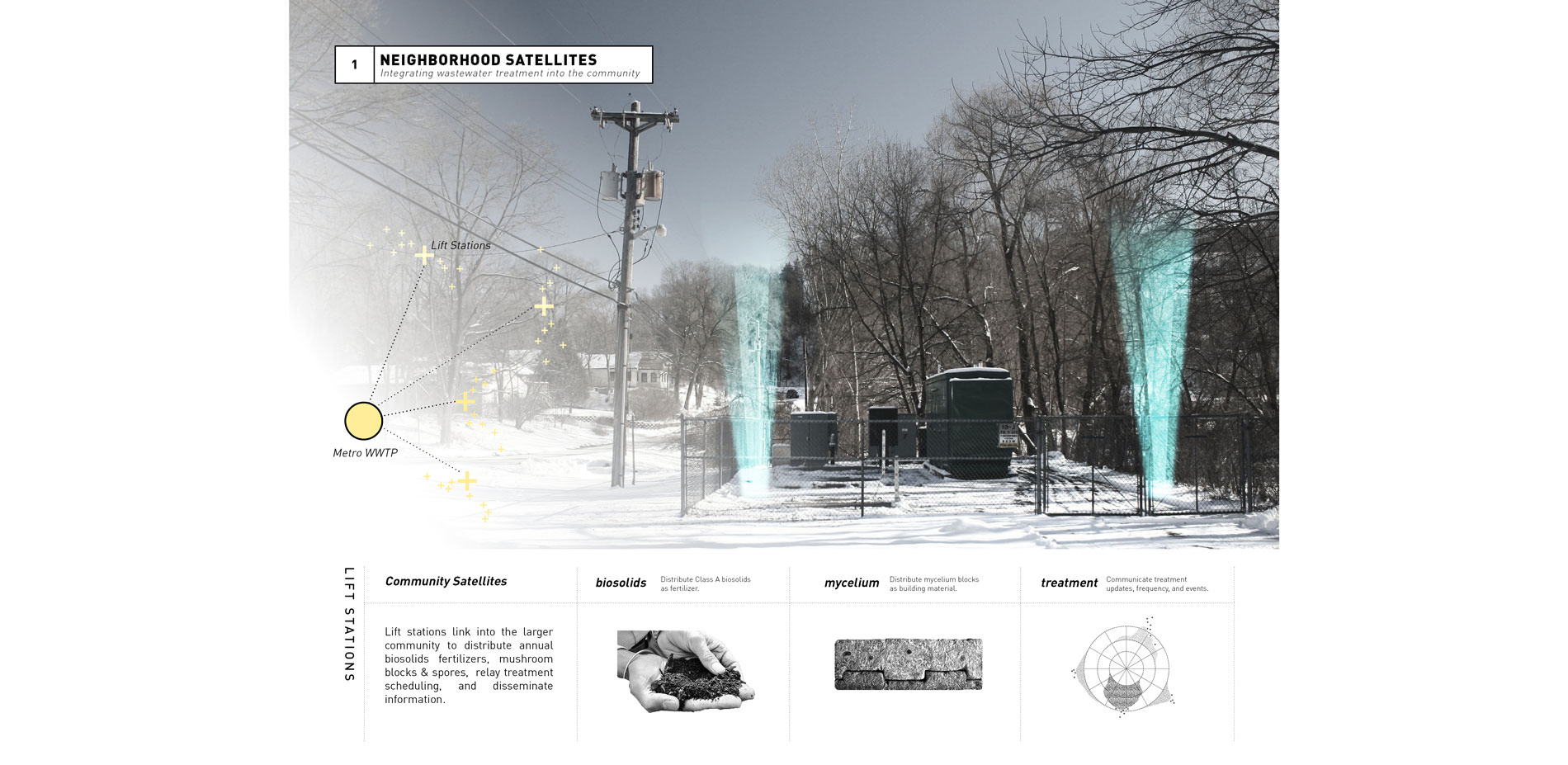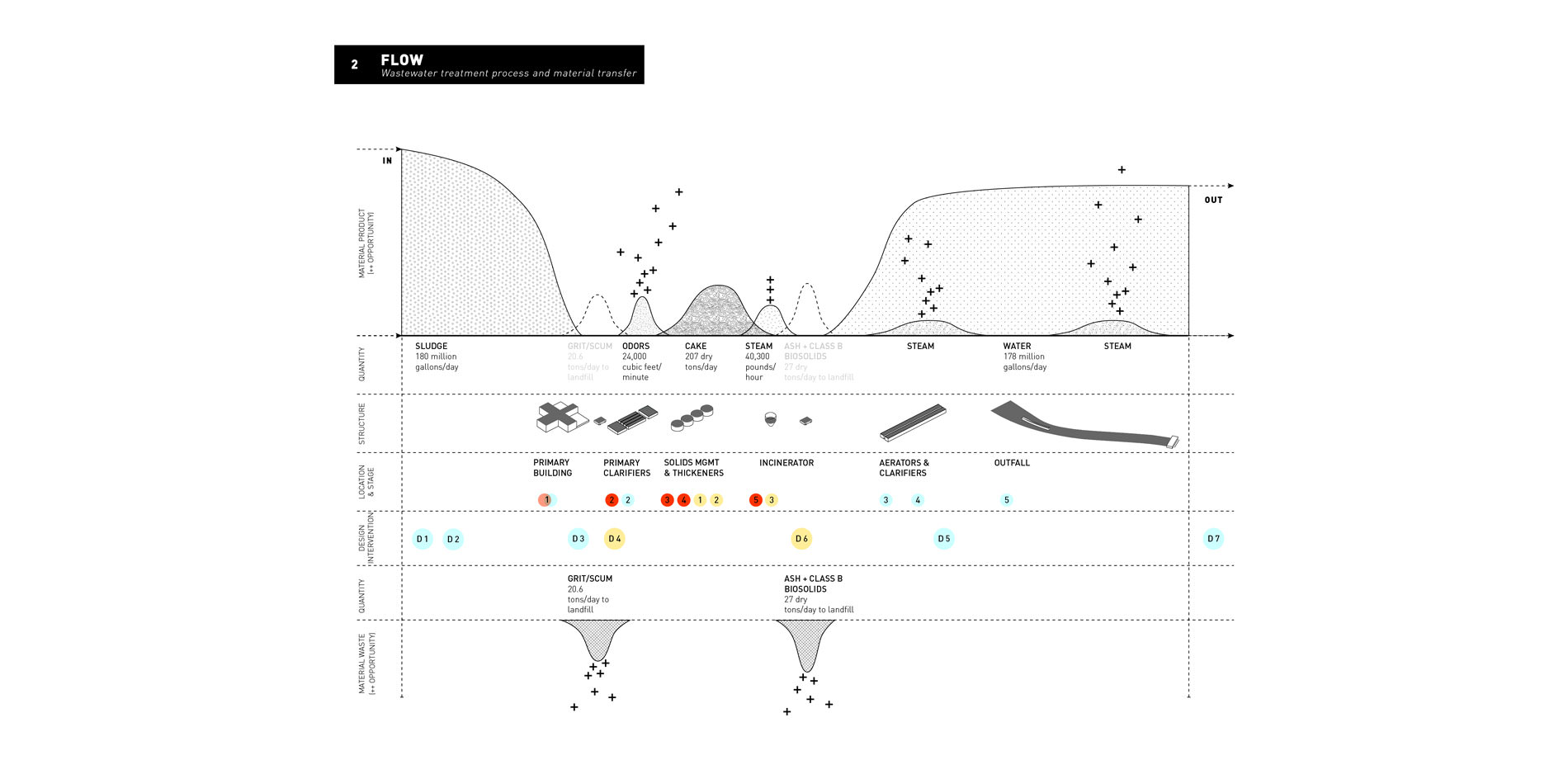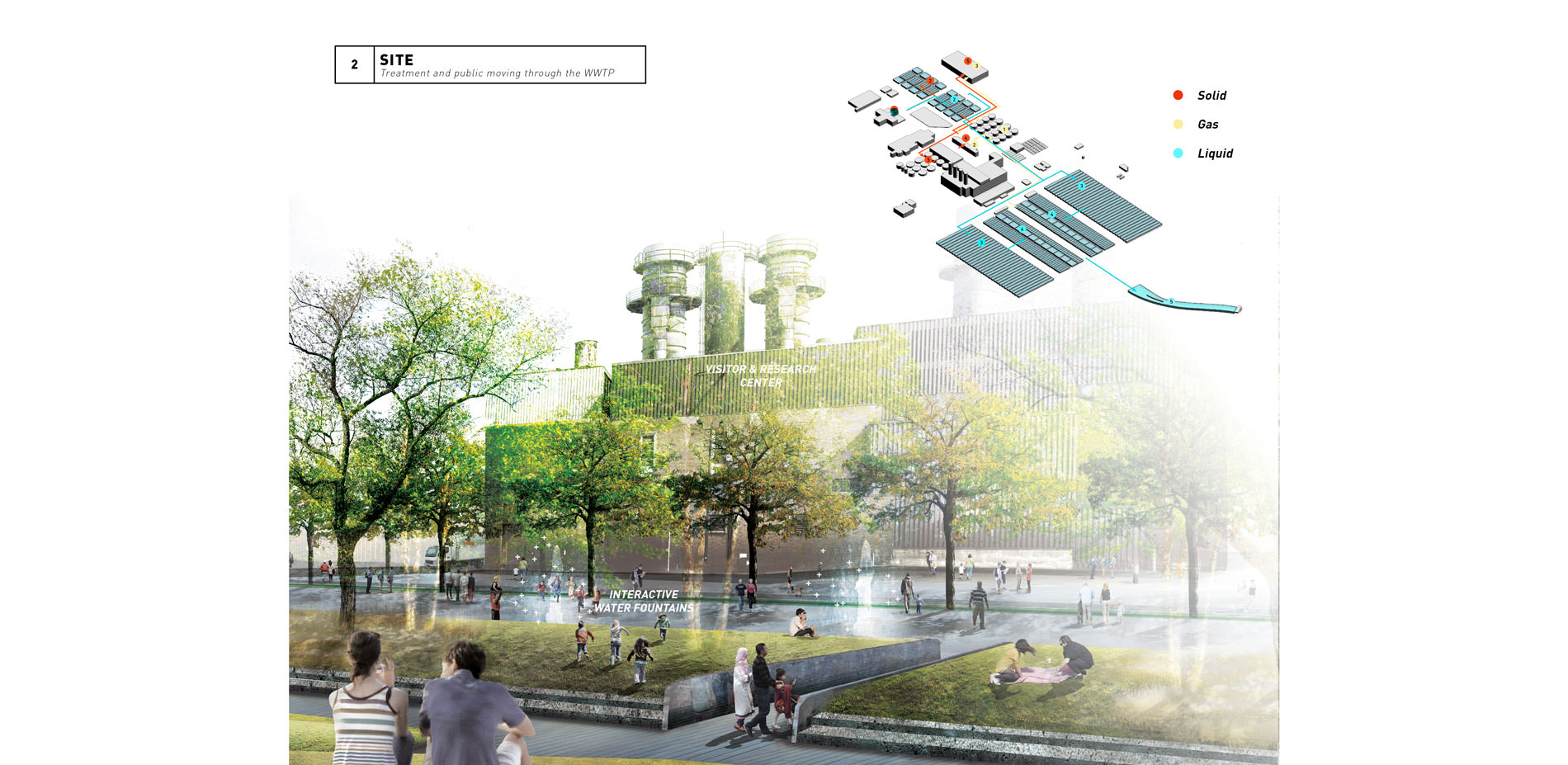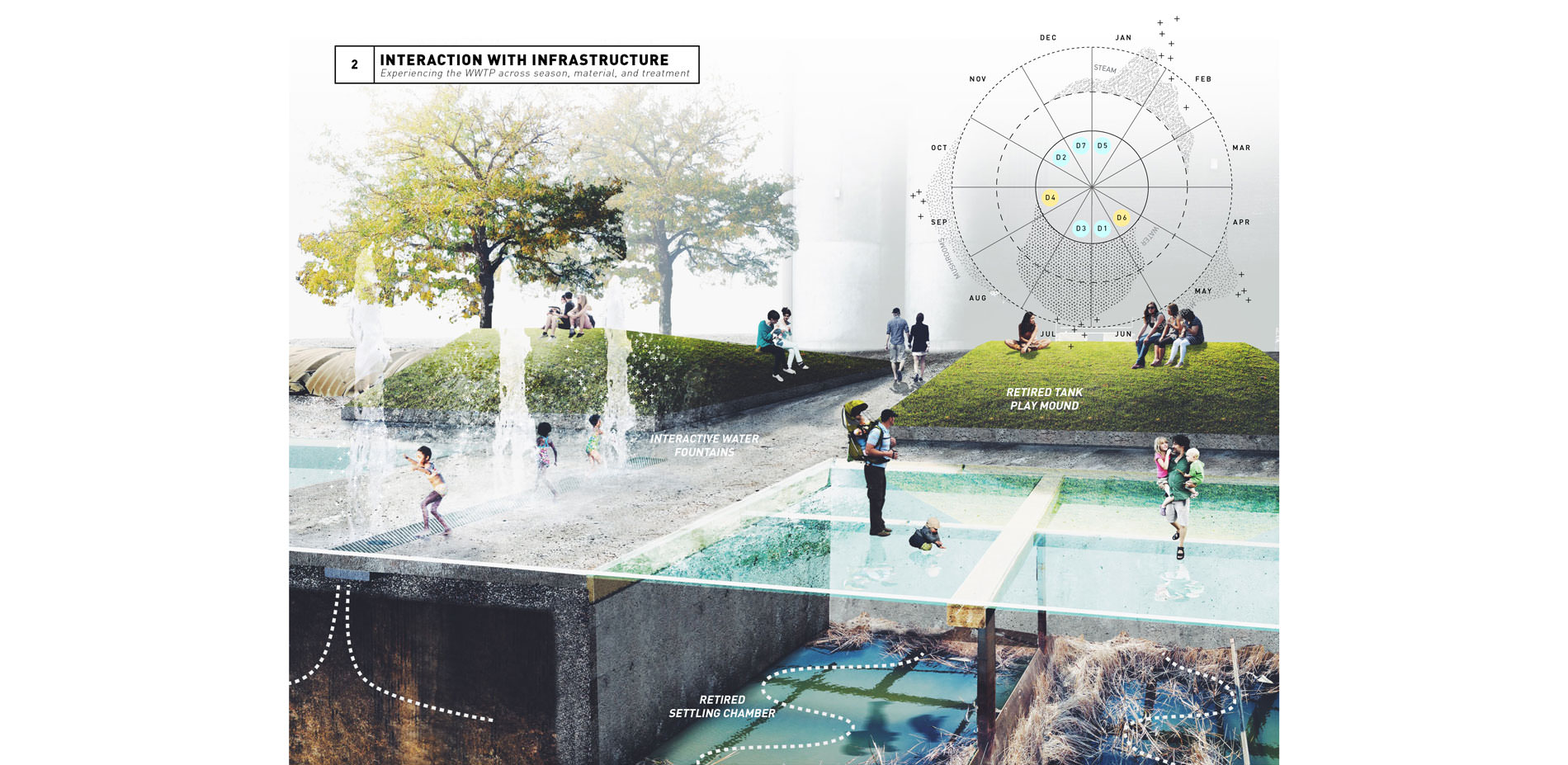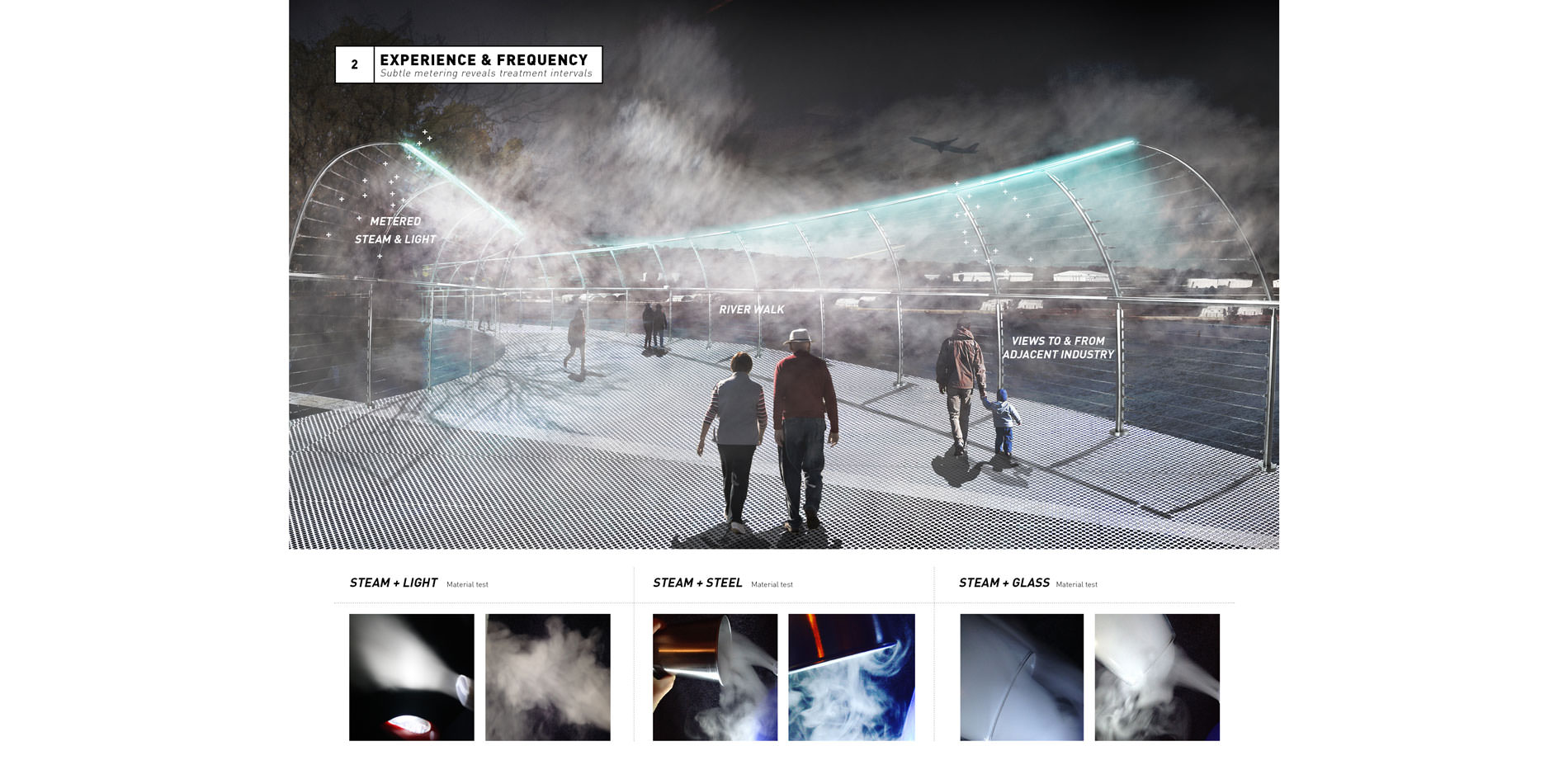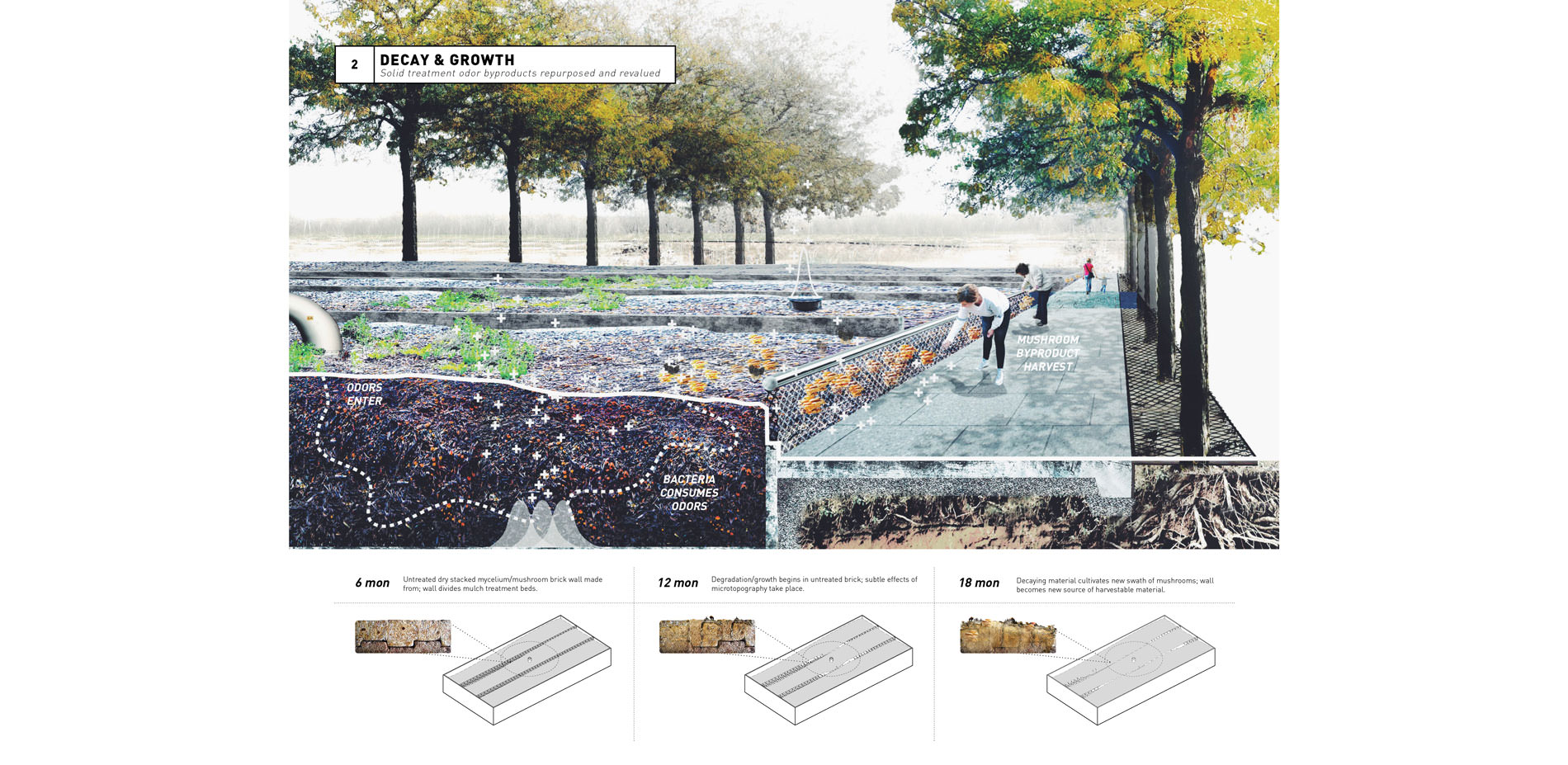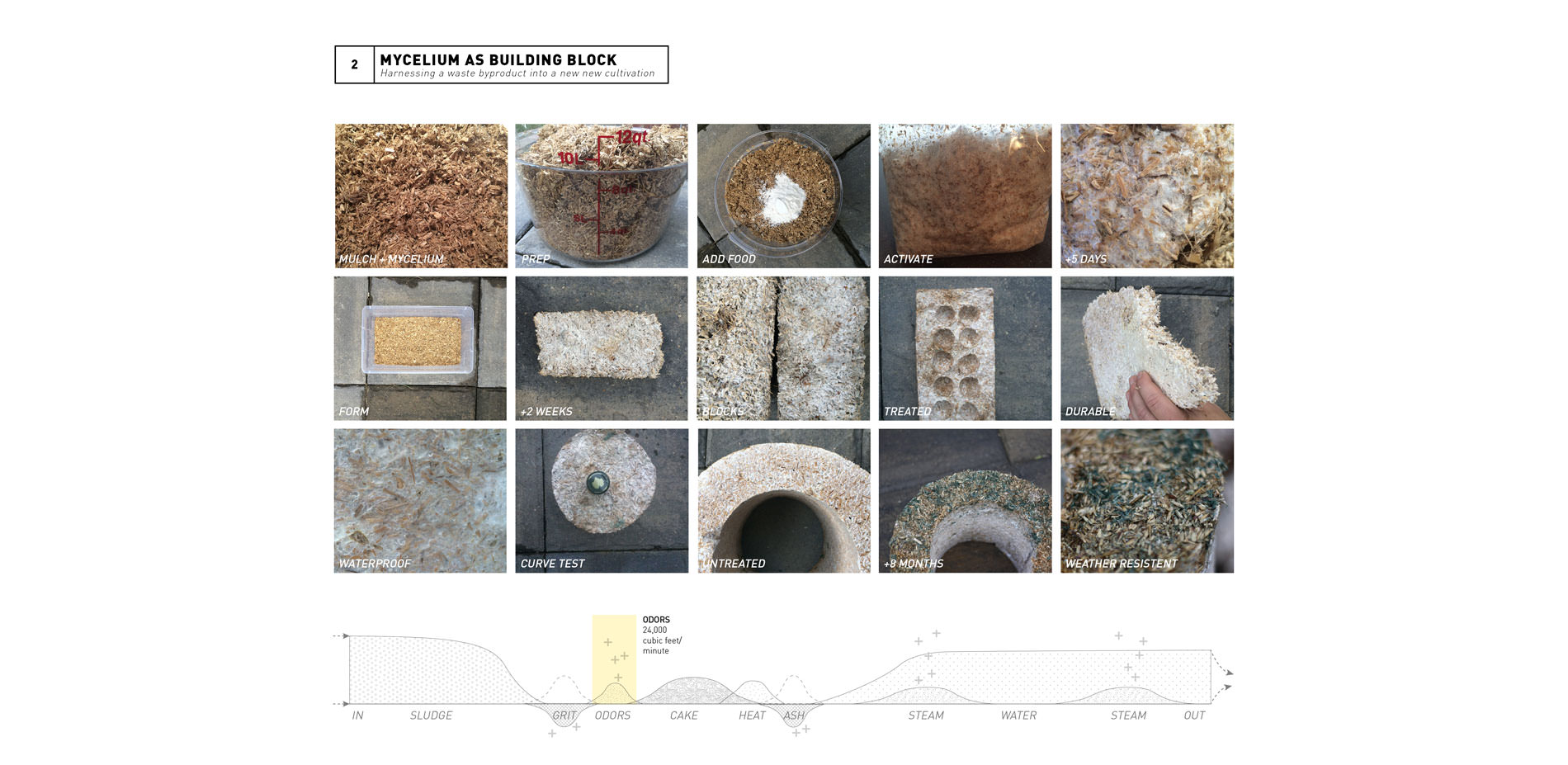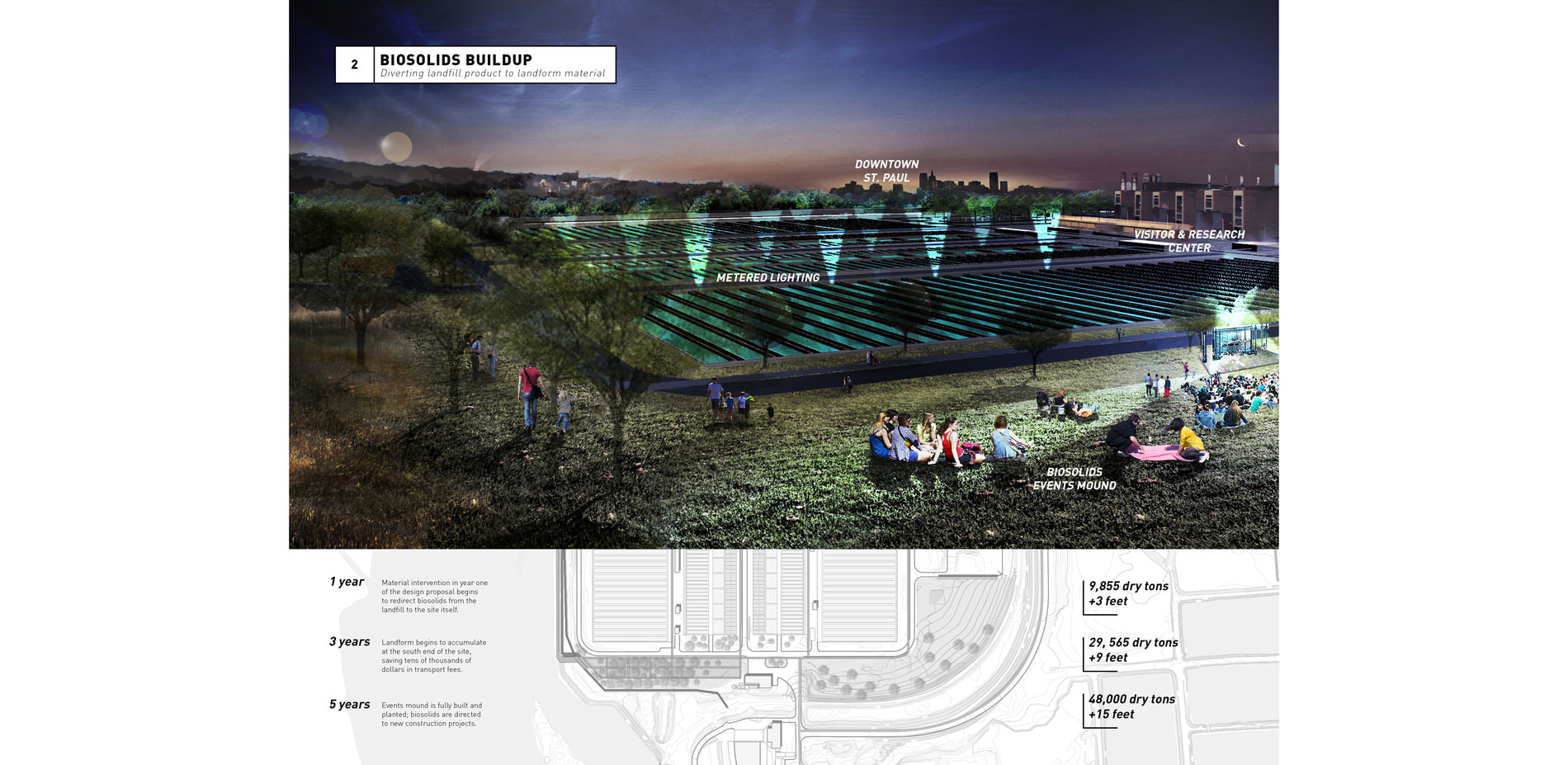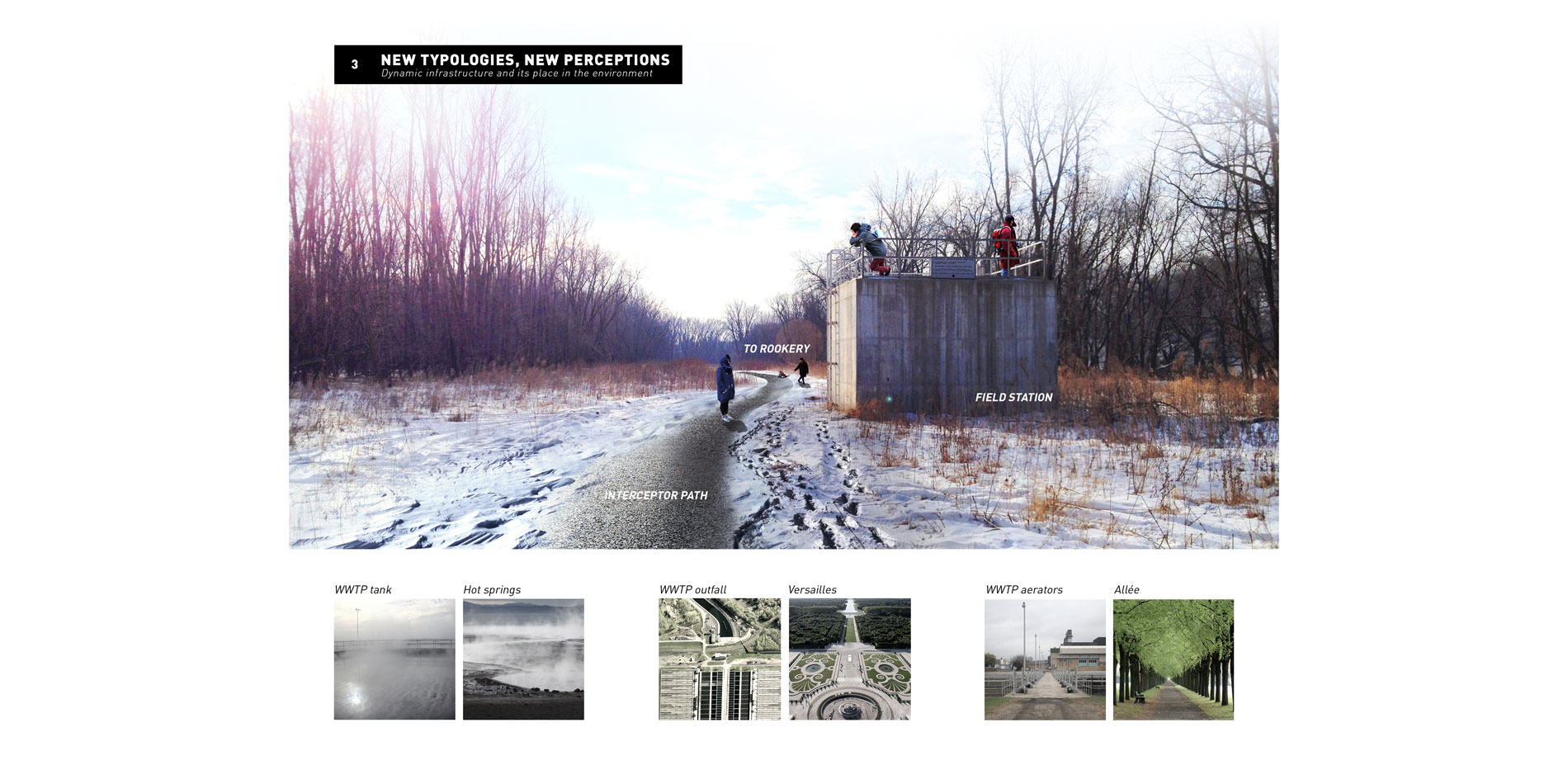Invisible Works: A public introduction to the dynamic life of wastewater treatment
AWARD OF EXCELLENCE
General Design
St. Paul, MN, USA | Bridget Ayers Looby, Associate ASLA | Faculty Advisors: Matthew Tucker; Joseph Favour, ASLA; Baline Brownell
University of Minnesota
This project takes something that’s generally pushed out of the public realm and isolated as a utilitarian function, and brings the public into it, making it a public amenity and an educational tool.
- 2017 Awards Jury
PROJECT CREDITS
- Nicholas Davern
- Metropolitan Council Environmental Services (specialty advisor).
- Ross Altheimer
- TEN x TEN Studio (non-academic advisor).
PROJECT STATEMENT
Though easily forgotten and often misunderstood, the infrastructures of wastewater treatment are inextricably linked with the pulse of our modern cities. Invisible Works is a public introduction to the dynamic life of wastewater treatment in St. Paul, Minnesota. It is a chance for people to engage in the active nature of treatment and simultaneously uncover its mysteries through experience. The intent is to transform the wastewater treatment plant from a marginalized system into a place that all can enjoy, acknowledging its importance as part of the public realm.
Three questions drive the design:
- How can the public realm be stitched back into this public works?
- How can the metabolic process of wastewater treatment be revealed in material and site scales?
- How can this new typology for public space cultivate dynamic thinking?
This project is worthy of consideration because of its potential to expand the role that landscape architects play in celebrating and exploring the hybrid systems that support us, and in evolving the scope of the profession.
PROJECT NARRATIVE
Invisible Works
1) How can the public realm be stitched back into the public works?
Turn on the faucet, open up the spigot, push down the handle, forget the rest. The metabolism of the modern city is supported through an invisible network of pipes, pumps, valves, and tanks. However, the majority of wastewater treatment functions out of sight and beyond everyday perception. Invisible Works brings the public realm back into this essential piece of public works, engages everyday users in its metabolic process, and shifts perception of wastewater treatment from an industry happily ignored to a dynamic public landscape and source of new materials, traditions, and ideas.
The cause for this naiveté about wastewater treatment stems from the manner in which cities have grown. As populations and footprints increased, wastewater treatment was relegated to the periphery of cities. However, continuous innovation has led to more sanitary and sustainable practices, and it is no longer necessary to separate the public from the process. Today, the Twin Cities Metropolitan Council treats approximately 250 million gallons of wastewater daily at 8 regional treatment plants, directed through 5,000 miles of sewers across 108 communities. The Metro Wastewater Treatment Plant (WWTP) is the largest and farthest-reaching of all the plants. Located 3 miles from St. Paul between the Mississippi River, Pig’s Eye Lake, neighboring industry, and nature reserve, the 180-acre plant blurs the line between community, industry and ecology.
The fingers of the Metro WWTP infrastructure are expansive, and the flow constant. After being used in residences and businesses, wastewater is flushed into local pipes, which plug into municipal sewer pipes, which then lead into interceptors, the largest of the conveyor pipes. Interceptors flow to the lowest point in the sewershed: the Metro WWTP. When gravity is insufficient to direct the flow of blackwater, the interceptors run through lift stations, which are effectively invisible to the public eye. Embedded within a public park as a nondescript building or sitting at the end of a cul-de-sac, the stations are quiet connections which rarely merit a second glance. The design proposal begins at this community level, transforming the lift stations from overlooked elements to distributors of fertilizers, building materials, resources, and information.
2) How can its metabolic process be revealed in material and site?
The site design blends spatial, visceral, and material opportunity, allowing the visitor to read the treatment process through experience rather than on a pamphlet. Safety and immersion are paramount in pedestrian flow. The northern zone, is primarily restricted to employees and guided tours only; the central zone encompasses the most concentrated public realm; the southern zone focuses on the less programmed experience with trail connections to the larger context.
Once wastewater arrives at the Metro WWTP, it takes approximately 15 hours to make the journey from dirty to clean. During that time, it is separated into a number of different materials through a series of chemical and organic processes. By breaking down each of those stages and quantities, Invisible Works reveals strategic points throughout the process that present opportunities for intervention:
Treatment - The design highlights treatment north to south; dirty to clean. As the visitor moves toward the outfall, public space becomes increasingly less formal, enabling deeper exploration of the process as the material eventually returns to an interactive state.
Season - In Minnesota’s extreme climate, materials become amplified during certain times of the year. Summer lends itself to interactive water features, winter enhances steam and ice crystal formations, and spring and fall invite fauna activity and mushroom harvest. The design takes advantage of these phenomena by bringing the public into contact with these safe byproducts, simultaneously allowing people to read the phase of treatment.
Light & Steam - The treatment process at the Metro WWTP is constant, operating 24 hours a day, 365 days a year, and treating 180-250 million gallons of water each day. Because the current plant is visually constant and does not reflect this flow to the untrained eye, a system of showing benchmarks in a subtle way is essential. The design proposal uses pedestrian path lights as meters of the process. Each time 10 million gallons of wastewater is cleaned, the lighting will perform a recognition of this achievement. Depending on season and flow, this will happen anywhere from 18 to 25 times per day. The proposal transforms site lighting into meters of treatment process. Through this nuanced cadence, the user experience will change with each visit.
Mycelium - Currently, the Metro WWTP treats approximately half of its odors through an organic process of odor eating bacteria in large mulch beds outdoors. The design proposal doubles this organic treatment and relocate treatment to accommodate the size. One unintended byproduct of this process is growth of mushrooms in the warm mulch beds. Using subtle changes in topography in the mushroom beds combined with tree canopy amplifies and expands the mushroom growth process so that users can harvest edible mushrooms on site. Additionally, spores will be used to create durable mycelium blocks. These can be grown in any form, are structural, organic, and will be used for short term material storage on site and distributed throughout the community.
Biosolids - The proposal redirects 48,000 dry tons of class B biosolids from the local landfill over 5 years to create a landform at the south end of the site, which will serve as a large, informal events space. After this period, biosolids will be distributed to the community for earthworks projects, reinforcing the plant’s city-scale metabolic process.
3) How can this new typology for public space cultivate dynamic thinking?
Landscape architects have the unique opportunity to blur the line between infrastructure and public space in the places and experiences they design. In the future of the Anthropocene and the era of the city, public works will be seen as opportunities to re-imagine the urban landscape and our relationship to it. Given that wastewater treatment plants are recurring systems with predictable typologies within every major metropolitan area in the United Sates, they present a unique opportunity for scalable intervention. Invisible Works reveals the dynamism, mystery, and potential in wastewater treatment, and in doing so urges a shift in perception and > questioning of the role of infrastructure in the public realm.
PRODUCTS
Plant List
- Acer saccharinum
- Populus deltoides
- Quercus macrocarpa
- Quercus bicolor
- Gleditsia tricanthos
- Ginkgo biloba
- Gymnocladus dioicus
